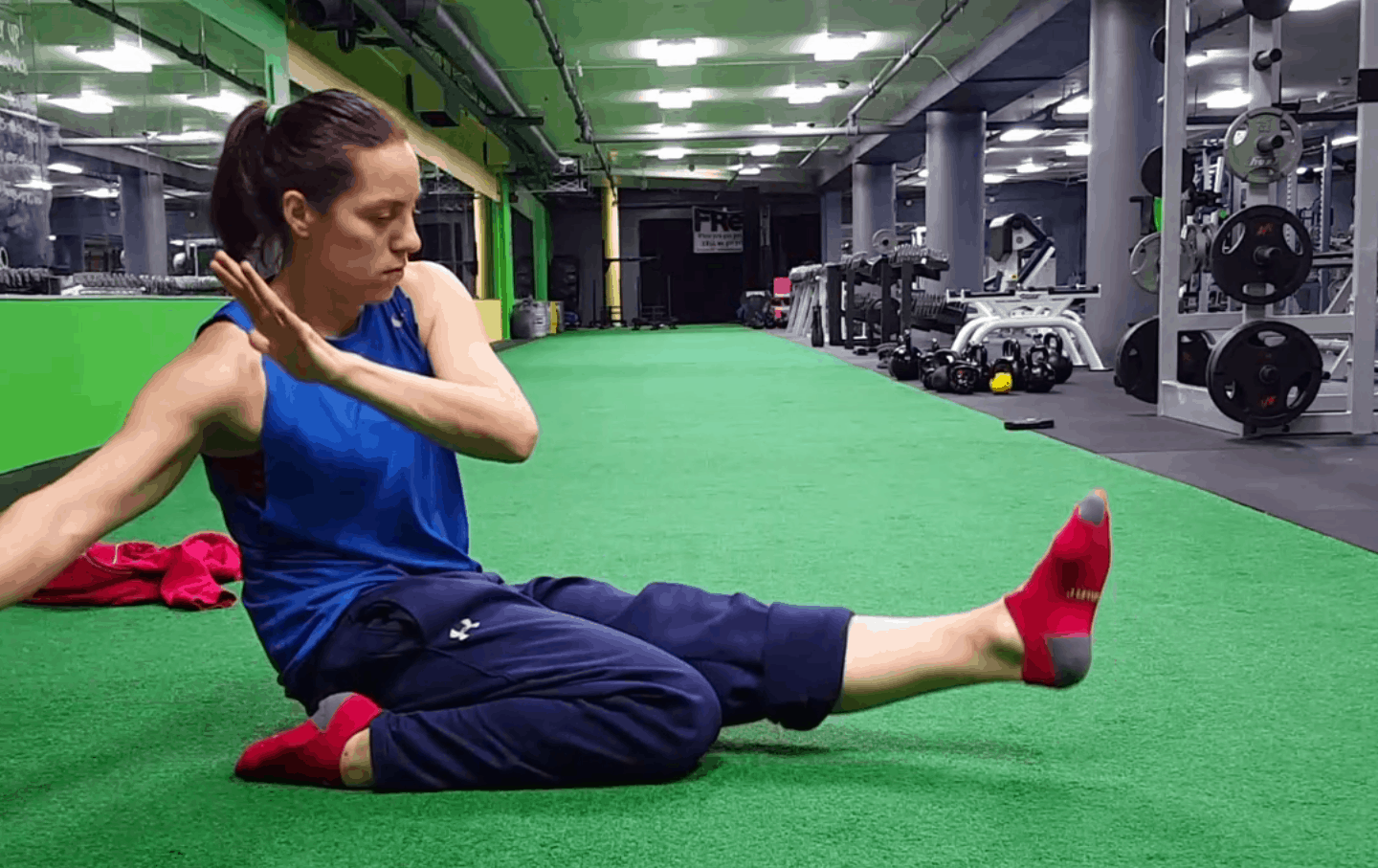
Hamstring Curls and Loaded Knee Flexion
Thirteen years ago, I had ACL reconstruction surgery using a hamstring graft. My tissues have long since ‘healed’, but the overall function still lacks behind my non-injured leg. Full flexion remains it’s biggest weakness. Here’s snapshot of the discrepancy in the hardest position for me to control — standing upright with toe pointed:
I’m standing flush to the rack to attempt to keep my thigh and hip engaged and minimize ‘cheating’. The only variable becomes the lower leg movement, which I am trying to control.
Plantar flexion of the ankle and toes negate help from the shin and throughout the movement. Half-kneeling versions demonstrated by Dr. Andreo Spina and Hunter Cook are similarly difficult, but tension in the hip flexors and glutes can sidestep isolation of the hamstring. If you drive down on the knee through the quads and hips, the ‘L’ shape can tilt using only a fraction of the desired muscles. Hip extension and anterior pelvic tilt utilize the butt and back extensors. The standing version presented above eliminates these unwanted influences.
Finding the position in which a move is most difficult emphasizes any gaps you may have overlooked.
Once isolation has been given it’s necessary attention, integration into a larger pattern becomes justified work.
As I explained in an earlier post, hamstring flexion is greatly connected to dorsiflexion . The ability to pull your heel to butt is an integral prerequisite to deep squatting . Since we’re working on an issue with a single leg, the pistol squat is an appropriate pattern to incorporate a hamstring curl. By initiating the movement with controlled knee flexion, we ensure that the hamstring is firing and ready and can contribute to the cause:
Pre-activating the hamstring also makes it easier to compress the hips into flexion. Instead of focusing on the space from thigh to chest, prioritize squeezing the heel to butt and then extend the knee:
Finally, low sit movements may be the ultimate display of knee and ankle health. Both loaded by bodyweight, the knee resides in full flexion while the ankle in full extension. A rotational component is added, demanding full range of joint control. This preparatory sequence covers all the bases:
Performing this without pain or compromise assumes you can hold the low sit position.
Once in a low sit, try a collapsed knee movement path , touching the closest butt cheek to ground on each side. (butt taps to each side). You can then attempt to transition to single leg low sit from a prisoner squat:
You can tell there’s a lot of shin shuffling on this one, especially in the bottom video depicting the ACL repaired side.
The last step in this sequence is to hover the non-working leg to place full weight on a single knee through ankle :
The upper portion of the video shows my surgical knee down. Note how the angles are larger and there’s less consistency with speed. Much more momentum from the upper body is used to complete the task.
A lack of pain does not mean full function is inherent. Keep exploring your weaknesses to verify if they’ve been fixed. Experimentation feeds into confidence, creating a cycle of playful examination — the embodiment of a participant in a culture of movement.
TO REVIEW:
- Before experimenting on surgically repaired tissues, ensure adequate healing has taken place
- Constantly challenging position dredges up lingering weaknesses
- Hamstring flexion is directly related to deep squatting
- Preempting a larger pattern with a smaller pattern greatly increases the integration of two
- Hamstring tension allows for greater hip flexion
- Low sits challenge the joint integrity of the lower body
- Loaded, fully flexed low sits rely on the core and upper body to drive movement



